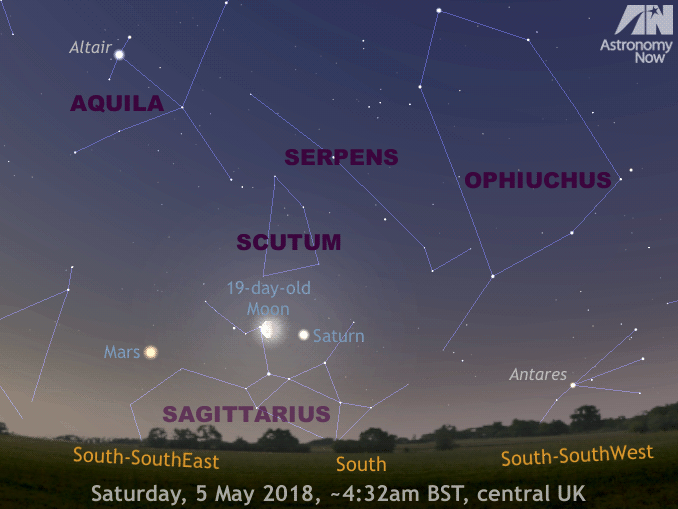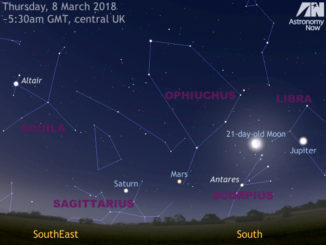
Observers in the British Isles with a clear sky at 4:30am BST on Saturday, 5 May can see the 19-day-old Moon just 3¾ degrees to the left of the magnitude +0.3 ringed planet. This means that both Saturn and the Moon will comfortably fit in the field of view of most binoculars, but you’ll need a small telescope magnifying 50x or more if you wish to glimpse the planet’s ring system. Saturn is currently highest in the southern sky about half an hour before sunrise in the UK.
Look low in the south-southeast an hour before sunrise on Sunday, 6 May in the UK and you’ll see the waning gibbous Moon poised some 2⅓ degrees to the upper right of magnitude -0.5 Mars, hence binoculars and small telescopes magnifying less than 20x can see the pair in the same field of view. However, you’ll need to employ powers of around 150x if you wish to see the Red Planet’s tiny gibbous disc enlarged to the same apparent size as the adjacent Moon appears to the unaided eye.



